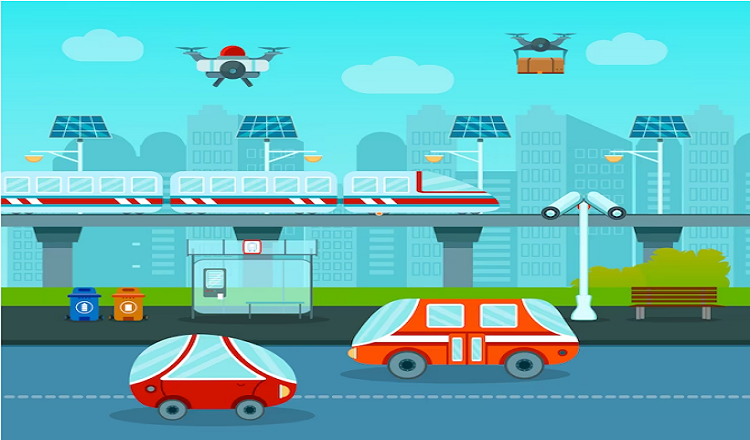The world is rapidly changing, and with it, the way we move around is evolving too. In recent years, the impact of robotics on transportation and autonomous vehicles has been nothing short of revolutionary. From self-driving cars to delivery drones, robotics technology is transforming the transportation industry as we know it.
The implementation of robotics in transportation brings with it a host of benefits, from increased safety to reduced traffic congestion. Autonomous vehicles are now being tested on roads and highways around the world, and the technology is being hailed as a potential solution to some of the most pressing transportation issues of our time. However, with these benefits come a number of challenges, from regulatory hurdles to public acceptance. As the industry continues to evolve, it is important to consider the impact of robotics on transportation and the ways in which it will shape the future of mobility. So, buckle up and get ready to explore the exciting and sometimes bumpy road ahead.
The role of robotics in autonomous vehicles
Autonomous vehicles rely heavily on the use of robotics technology to function properly. The key components of autonomous vehicles that utilize robotics include sensors, actuators, and advanced systems. Sensors provide real-time data about the vehicle’s surroundings, such as its location, speed, and the presence of other vehicles or obstacles on the road. Actuators then use this data to control the vehicle’s movements, such as accelerating, braking, and steering.
In addition to these basic components, autonomous vehicles also rely on advanced systems to enable them to navigate, communicate with other vehicles, and avoid obstacles. These systems include GPS and mapping technology, as well as machine learning algorithms that enable the vehicle to learn from its experiences and make more accurate predictions about future events. Together, these components and systems allow autonomous vehicles to function independently and safely, potentially revolutionizing the way we travel in the years to come.
Advantages of using autonomous vehicles
The use of autonomous vehicles in transportation provides several advantages, which are rapidly changing the landscape of the industry. One of the most significant benefits is the potential to improve safety. With the advanced sensor and AI technologies used in autonomous vehicles, they have the ability to detect and respond to potential risks on the road, potentially reducing the number of accidents caused by human error.
Another advantage of autonomous vehicles is the potential to reduce traffic congestion. As autonomous vehicles can communicate with each other and use AI algorithms to optimize their routes, they can potentially reduce the time spent on the road and decrease the overall number of vehicles on the road at any given time. Industries such as trucking and delivery are already implementing autonomous vehicles, which are improving their efficiency and reducing operating costs. These benefits, along with others, have the potential to significantly transform the transportation industry in the years to come.
Challenges of implementing autonomous vehicles
Despite the potential benefits, the implementation of autonomous vehicles also poses significant challenges. Regulatory hurdles are a major concern, as laws and regulations regarding autonomous vehicles vary widely from one region to another. Technological limitations, such as the ability of autonomous vehicles to operate in extreme weather conditions, also remain a significant challenge.
Another challenge is public acceptance, as many people are hesitant to embrace the idea of autonomous vehicles due to safety concerns and the fear of losing control. There have also been incidents and accidents involving autonomous vehicles that have impacted public perception, such as the 2018 Uber self-driving car crash in Arizona. Such incidents have highlighted the need for continued testing and development to ensure the safety and reliability of autonomous vehicles before they become mainstream. Addressing these challenges will be crucial in ensuring the successful implementation of autonomous vehicles in the future.
Ethical considerations
The use of autonomous vehicles raises significant ethical considerations that must be carefully considered. One key issue is the potential for accidents and their impact on human life. With the increased use of technology, there is a risk of software errors, equipment malfunctions, and other problems that could cause accidents, resulting in injury or loss of life.
Privacy concerns are also important, as autonomous vehicles gather significant amounts of data about their passengers, including their location and personal information. The responsibility of manufacturers and operators is another consideration, as they have a responsibility to ensure the safety and reliability of autonomous vehicles, as well as to address any issues that may arise. Addressing these ethical considerations will be crucial in ensuring that the benefits of autonomous vehicles are realized while minimizing any potential negative impacts.
Impact on the transportation industry
The implementation of robotics in transportation and the rise of autonomous vehicles are transforming the transportation industry in several ways. One major impact is the potential for job displacement, as the widespread adoption of autonomous vehicles may lead to fewer jobs in areas such as driving and transportation.
Changes in transportation infrastructure are also expected, as the development of new infrastructure such as charging stations and autonomous vehicle lanes will become increasingly important. In addition, the emergence of new business models, such as ride-sharing and last-mile delivery services, are likely to become more prevalent in the future. These changes present both challenges and opportunities for the transportation industry, requiring careful planning and consideration to ensure that the industry continues to evolve in a positive and sustainable manner.
Future outlook
The potential for robotics in transportation and autonomous vehicles is vast, and as technology continues to evolve, so too will the ways in which robotics is utilized in the transportation industry. Emerging trends and innovations in the industry, such as the use of artificial intelligence, machine learning, and advanced sensors, will enable autonomous vehicles to become more efficient, safer, and reliable.
Further advancements in the technology are also expected in the coming years, as manufacturers and developers continue to refine and improve the systems that power autonomous vehicles. This will include the continued development of infrastructure, such as charging stations and vehicle-to-vehicle communication systems, to support the growth and adoption of autonomous vehicles.
The impact of robotics on transportation will continue to evolve over time, as the technology becomes more sophisticated and widely adopted. While there are challenges and ethical considerations to be addressed, the potential benefits of autonomous vehicles and robotics in transportation are significant, including improved safety, reduced congestion, and greater efficiency. As we look to the future, it is clear that the transportation industry will be forever transformed by the impact of robotics and autonomous vehicles.




